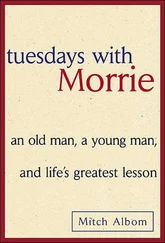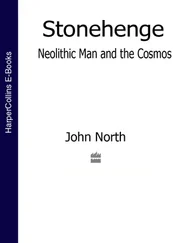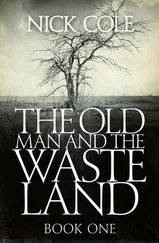Accepting* that populations are controlled in a density-dependent manner the next question to consider is the nature of these regulatory processes. Fundamentally, either the birth-rate or death-rate must be the factor of change. Wynne-Edwards and his supporters have argued that the reproductive rate is of much importance and that those animals with a high expectation of survival, such as many seabirds, have evolved low reproductive rates and vice versa . They have also claimed that a host of conventional behaviours have evolved as a means of regulating numbers. For instance, Wynne-Edwards regards the eating of eggs and young, practised by many raptors and also storks, as a device to limit their reproductive output; deferred maturity (gulls do not breed until three or four years old), territory formation, and various other behaviours are similarly regarded in this light. These views form part of his more general thesis that animal numbers in undisturbed habitats are at an optimum density and that maintaining this optimum has selective advantages. Special cases of this theme have attracted various supporters. E. M. Nicholson (1955) is one and he ascribes population control to density-dependent movements, rather than to mortality, while Lidiker (1962) goes further in seeing emigration as a mechanism enabling populations to have densities below the optimum carrying capacity of their habitat. Hence, Wynne-Edwards regards behaviours such as those listed above as homeostatic (self-regulatory) mechanisms, being induced by the population rather than by the environment.
Wynne-Edwards also drew parallels between bird and human populations, claiming that infanticide, taboos and other methods of reproductive restraint practised by so-called primitive societies were extensions of these same deep-rooted animal behaviours. In so doing he resuscitated some very early ideas of Carr-Saunders (published in 1922) which the well-known demographer did not subsequently repeat. Indeed, Mary Douglas, in criticising the idea of an optimum population, points out that there are many examples of human under-population. Considering certain primitive societies in detail, she makes it clear that they represent highly evolved and complex groups about which generalisations are meaningless. For instance, the Netsilik Eskimos live in a harsh environment where males suffer a very heavy mortality in hunting, and female infanticide is practised primarily to maintain an even sex balance. The Ndembu, a Lunda tribe in Zambia, grow cassava as their staple crop and live at a density of 3–5 people per square mile, whereas cassava could support a density of 18 people per square mile. The reason for the discrepancy is that the tribe passionately love hunting and move their villages to where game is available so that they never reach a stage where they are up against the ceiling imposed by their basic resources. As Douglas says: ‘they live for the oysters and champagne of life not the bread and butter.’ On the other hand, the Rendille are a tribe of camel herders in Kenya and live on the meat and milk of their sheep and camel herds. An optimum number of people is needed to maintain the camel herd, and when smallpox reduced man-power, stock had to be lost. In more normal conditions a balance of man-power is achieved by emigration, monogamy (herds are not divided but go only to the eldest son), while a measure of infanticide is practised (all boys born on Wednesdays).
In general terms, homeostatic population control in human groups depends on limited social advantages (the enjoyment of hunting by the Ndembu; education, motor cars and social prestige in western Europe) and not on any relationship to resources per se, as is the case with infra human species. Douglas could well be right in not attributing the increase in the Irish population between 1780–1840 to the adoption of potatoes as a staple diet, but rather to the ruination of Irish society by penal laws and English trade tariffs. Similarly she argues that the miseries of enclosures and the Poor Laws resulted in the population explosion which led to the Industrial Revolution, rather than that increased resources stimulated an increase in population. If true, this is quite different from the way in which animal populations are determined.
Animal populations cannot be directly compared even with the supposedly most primitive of human ones. Moreover, unequipped with any cultural tradition and means of communication, some special mechanism would have to be found to account for what amounts to altruistic behaviour. The Darwinian viewpoint is that if two animals (of the same or different species) are in competition, the one able to maintain the highest reproductive output must succeed at the expense of the other, all else being equal. This is the meaning of natural selection, which amounts to individual selection. What then would prevent the genes of parents which practise restraint from being at first swamped and then lost in competition with less socially inclined individuals? Wynne-Edwards surmounted this problem of explaining how individuals could acquire genes which cause them to behave in socially advantageous ways, sometimes at their own expense, by invoking the concept of group selection. In other words, in many situations survival of the group is more important than survival of the individual. Without entering into detail it must be said that the genetical basis for group selection is very restricted, and it can only be shown to be feasible in small isolated populations (birds do not satisfy the requirements of isolation as envisaged by geneticists) or in those, such as the social insects, where numerous genetically identical individuals are produced from one female, for which the term kin-selection is more appropriate. It seems to me that all the examples given by Wynne-Edwards can be answered (or will be when knowledge accumulates) more satisfactorily by individual selection and that to introduce group selection is unnecessary. This applies to two situations which I have studied closely – the peck order in birds and stress disease. I myself, therefore, reject the concept of an optimum population in this sense, together with the view that animals impose their own control over population increase. I have discussed the subject at some length because it defines my approach to the subject of applied ornithology. So far as reproduction is concerned I fully support Lack’s thesis that the reproductive rate has evolved as the highest possible; selective disadvantages follow from the production of more or fewer young than the optimum number. Disadvantages which accrue from overproduction include reduced survival chances for the offspring because they are undernourished, or impairment of the parents’ health; underproduction leads to a failure in intra-specific competition with more fecund individuals.
As most birds produce a large excess of young, the total post-breeding population increases considerably, two-fold in the wood-pigeon, up to six-fold in the great tit, but by less than half in the fulmar. Various mortality factors, including disease, predation and starvation, now remove surplus individuals so that a balance with environmental resources is achieved, and a pattern of sharp fluctuations within each twelve-month period is superimposed on more subtle changes in the breeding population from one year to another. Lack has argued, and again I agree with his views, that the food supply is usually, but not invariably, the most important factor affecting these annual fluctuations in birds. While food could ultimately be the most important factor in all cases, other agencies, for instance predators, may hold numbers below the level which would be imposed by food shortage. The most important fact to appreciate from the viewpoint of economic ornithology is that causes of death are effective until the population is in balance with the environment, and in the absence of one such factor another will take its place. Conversely mortality factors are not usually additive – in the sense that two together do not decrease numbers more than one alone. The degree of stability seen in a population will, therefore, depend primarily on that of the environment and not on any essential characteristic of the population. By environment we not only mean the food supply but include all the other components, biotic and physical, which may interact to cause competition and mortality, directly or indirectly.
Читать дальше












